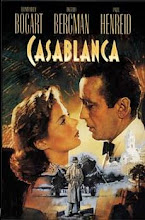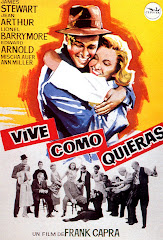 Praga es la capital de la República Checa, situada en la región de Bohemia, a las orillas del río Moldava, tiene algo más de un millón de habitantes. Llamada también "la ciudad de las cien cúpulas", "la ciudad dorada".
Praga es la capital de la República Checa, situada en la región de Bohemia, a las orillas del río Moldava, tiene algo más de un millón de habitantes. Llamada también "la ciudad de las cien cúpulas", "la ciudad dorada".Fundada a finales del siglo IX, fue corte de los reyes de Bohemia, entre los que destaca Carlos IV, quien mandó realizar numerosas obras en la Ciudad Vieja (Staré Mésto) y ordenó la construcción de la Ciudad Nueva (Nové Mesto) y de la primera Universidad de Europa central. En 1918 tras la Primera Guerra Mundial fue capital del nuevo estado: Checoslovaquia. En 1938 Hitler la invade al principio de Segunda Guerra Mundial. En 1968 tuvo lugar un movimiento de oposición a la Unión Soviética, conocido como la Primavera de Praga, duramente reprimido con la invasión del ejército Soviético. En 1993 tras la caída del comunismo, quedó finalmente, como la capital de la República Checa, tras la división pacífica de Checoslovaquia.
Son visitas obligadas, la plaza de la Ciudad Vieja y el antiguo Ayuntamiento con su mundialmente famoso reloj astronómico, el Castillo de Praga, el Puente de Carlos y la Catedral de San Vito, que es la catedral gótica más antigua de Europa Central, el Callejón de Oro y la Sinagoga Vieja-Nueva, la más antigua de la Europa central.
 Praga és la capital de la República Txeca, situada a la regió de Bohèmia, a les ribes del riu Moldava, té una mica més d'un milió d'habitants. Coneguda també com "la ciutat de les cent cúpules", "la ciutat daurada". Fundada a finals del segle IX, va ser cort dels reis de Bohèmia, entre els quals destaca Carles IV, qui va manar realitzar nombroses obres a la Ciutat Vella (Staré Mésto) i va ordenar la construcció de la Ciutat Nova (Nové Mesto) i de la primera Universitat de l'Europa central. En 1918 després de la Primera Guerra Mundial va ser capital del nou estat: Txecoslovàquia. En 1938 Hitler l'envaeix al principi de Segona Guerra Mundial. En 1968 va tenir lloc un moviment d'oposició a la Unió Soviètica, conegut com la Primavera de Praga, durament reprimit amb la invasió de l'exèrcit Soviètic. En 1993 després de la caiguda del comunisme, va quedar finalment, com la capital de la República Txeca, després de la divisió pacífica de Txecoslovàquia.Són visites obligades, la plaça de la Ciutat Vella i l'antic Ajuntament amb el seu mundialment famós rellotge astronòmic, el Castell de Praga, el Pont de Carles i la Catedral de San Vito, que és la catedral gòtica més antiga de l'Europa Central, el Carreró d'Or i la Sinagoga Vella-Nova, la més antiga de l'Europa central.
Praga és la capital de la República Txeca, situada a la regió de Bohèmia, a les ribes del riu Moldava, té una mica més d'un milió d'habitants. Coneguda també com "la ciutat de les cent cúpules", "la ciutat daurada". Fundada a finals del segle IX, va ser cort dels reis de Bohèmia, entre els quals destaca Carles IV, qui va manar realitzar nombroses obres a la Ciutat Vella (Staré Mésto) i va ordenar la construcció de la Ciutat Nova (Nové Mesto) i de la primera Universitat de l'Europa central. En 1918 després de la Primera Guerra Mundial va ser capital del nou estat: Txecoslovàquia. En 1938 Hitler l'envaeix al principi de Segona Guerra Mundial. En 1968 va tenir lloc un moviment d'oposició a la Unió Soviètica, conegut com la Primavera de Praga, durament reprimit amb la invasió de l'exèrcit Soviètic. En 1993 després de la caiguda del comunisme, va quedar finalment, com la capital de la República Txeca, després de la divisió pacífica de Txecoslovàquia.Són visites obligades, la plaça de la Ciutat Vella i l'antic Ajuntament amb el seu mundialment famós rellotge astronòmic, el Castell de Praga, el Pont de Carles i la Catedral de San Vito, que és la catedral gòtica més antiga de l'Europa Central, el Carreró d'Or i la Sinagoga Vella-Nova, la més antiga de l'Europa central.Prague is the capital of the Czech Republic, located in the region of Bohemia, to the borders del Moldave river, has something more of a million inhabitants. Call also "the city of the one hundred cupolas", "the golden city". Founded at the end of century IX, it was court of the kings of Bohemia, between which he honors Charles IV, who commanded to make numerous works in the Old City (Staré Mésto) and ordered the construction of the New City (Nové Mesto) and of the first University of central Europe. In 1918 after World War I he was capital of the new state: Czechoslovakia. In the 1938 Hitler’s it invades it at the beginning of World War II. In 1968 a movement of opposition to the Soviet Union took place, known like the Spring the Prague, hard repressed with the invasion of the Soviet army. In 1993 after the fall of the Comunism, it was finally, like the capital of the Czech Republic, after the pacific division of Czechoslovakia. Are forced visits, the seat of the Old City and the old City council with his world-wide famous astronomical clock, the Castle of the Prague, the Bridge of Charles and the Cathedral of San the Vito, who is the older gothic cathedral of Central Europe, the Gold Alley and the Old-New Synagogue, oldest of central Europe.



















































Cap comentari:
Publica un comentari a l'entrada